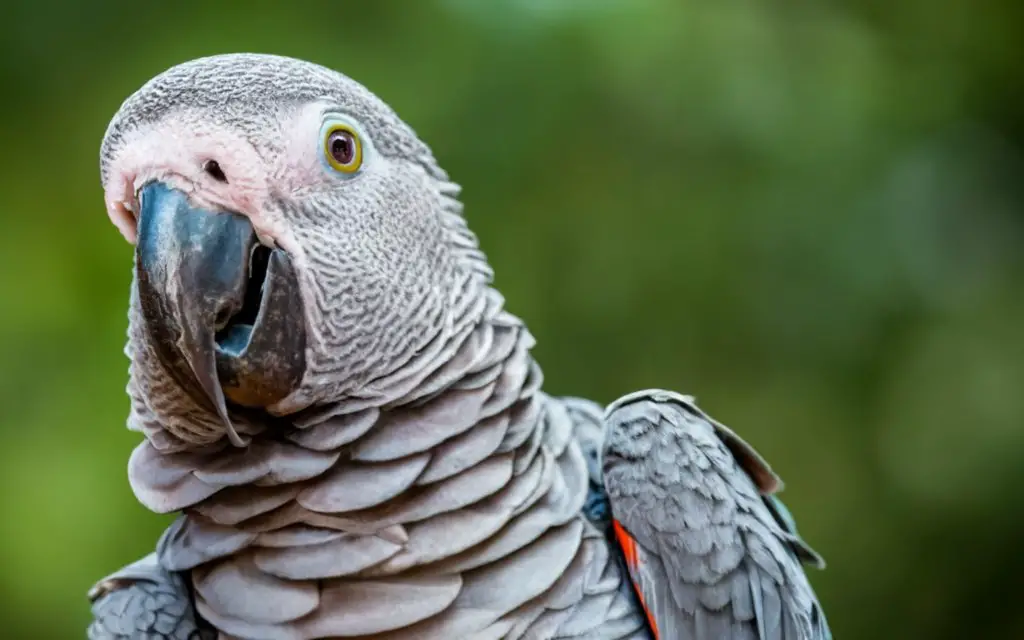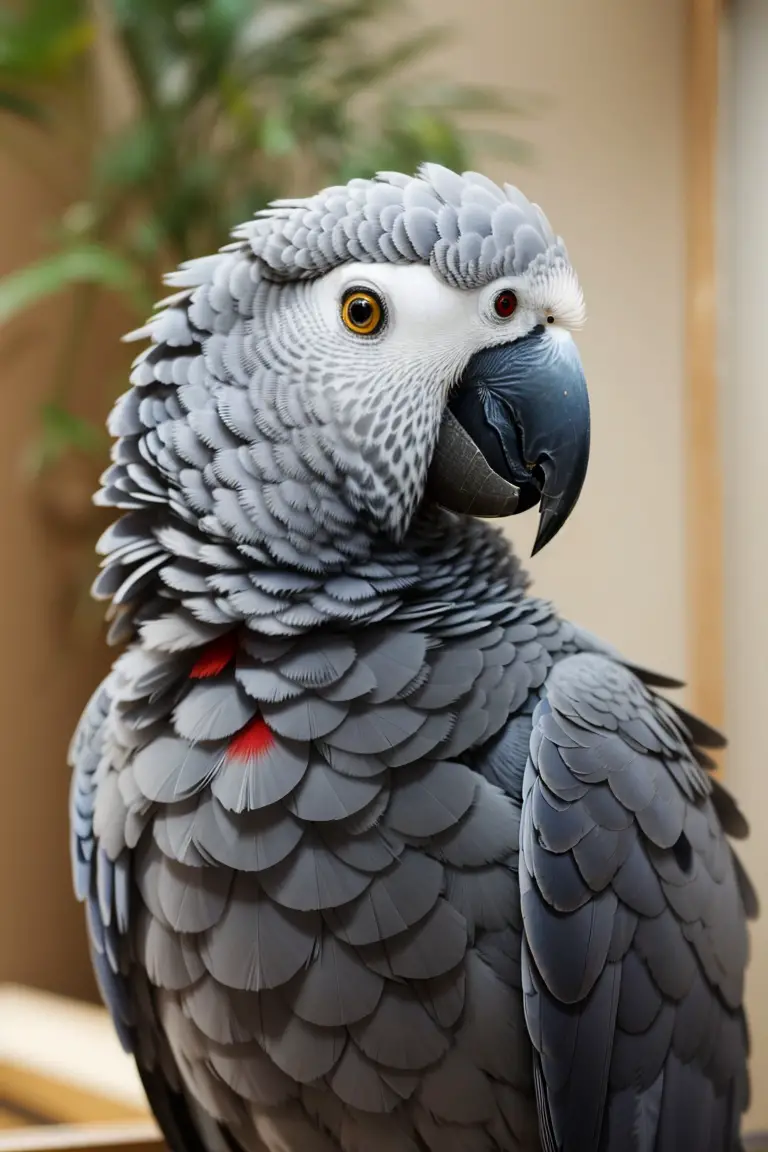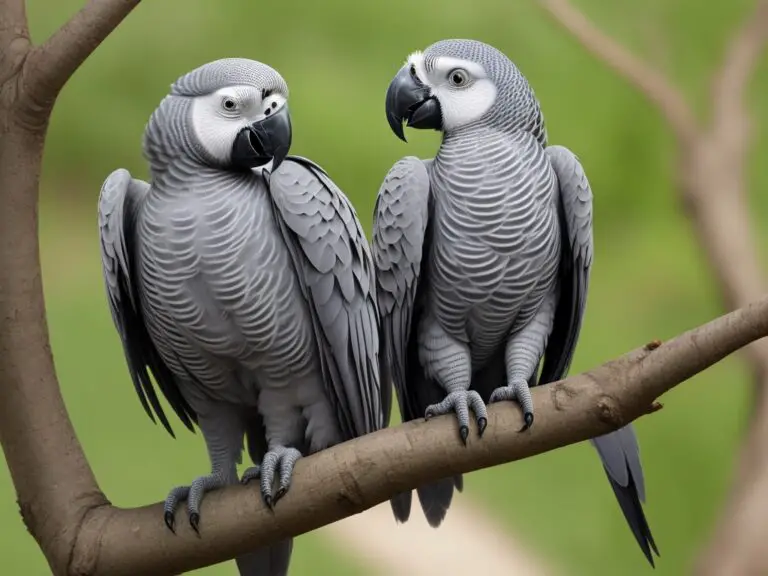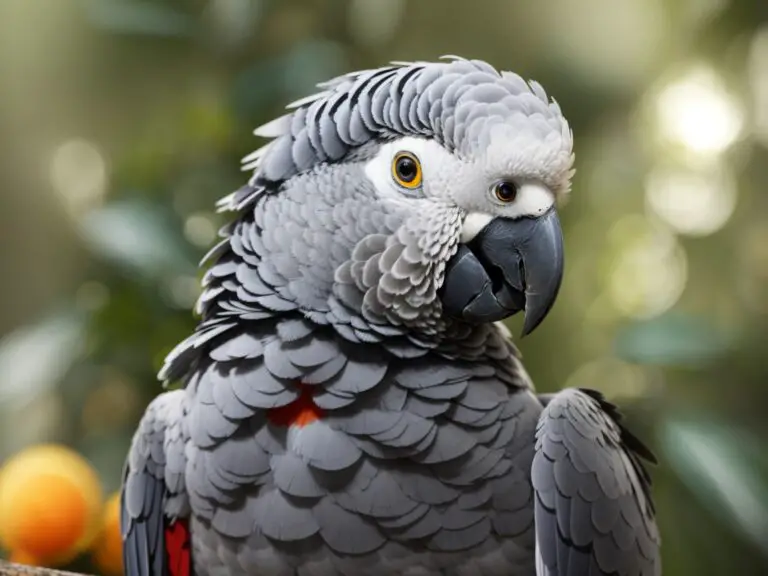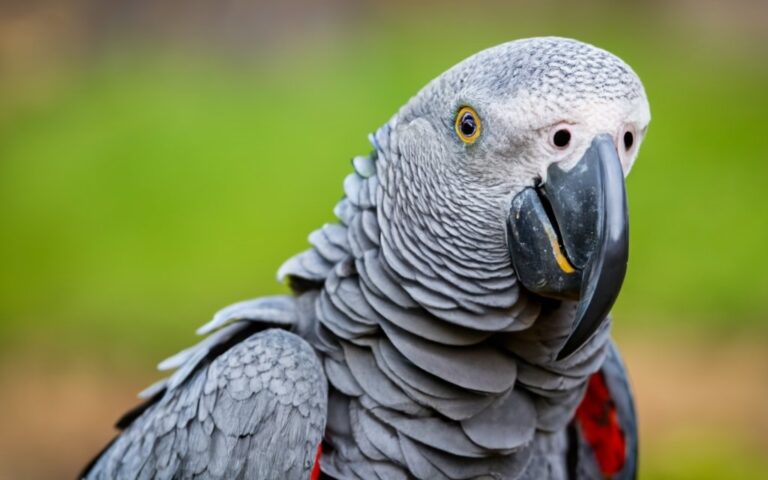How Do African Grey Parrots Communicate?
Key Takeaways:
- African grey parrots can mimic human speech with surprising accuracy.
- They use vocalizations and body language to communicate their needs and emotions.
- These parrots have the ability to understand and respond to human communication.
- Their complex social interactions and vocalizations make them highly adept at communicating with each other.
Welcome to our fascinating exploration of how African grey parrots communicate! Have you ever wondered how these remarkable birds convey their thoughts and emotions?
Well, you’re in for a treat! African grey parrots are known for their exceptional communication skills, which involve vocalizations, mimicry, body language, and visual cues.
In this article, we will delve into the various methods they use to express themselves, from their extensive repertoire of calls and vocalizations to their ability to mimic human speech.
Get ready to immerse yourself in the captivating world of African grey parrot communication!
| Method of Communication | Description |
| Vocalizations | African grey parrots are known for their exceptional mimicry skills. They can imitate human speech, sounds, and even complex melodies. |
| Body Language | These parrots use their body language to communicate various emotions. For example, fluffing their feathers indicates they are content, while a lowered head may indicate submission or fear. |
| Gestures | African grey parrots can use specific gestures to convey messages. For instance, raising one foot may signal a desire for attention, or tilting their head sideways can indicate curiosity. |
| Eye Contact | They use eye contact to establish trust, bond, or signal aggression. Maintaining eye contact with their human companions is an important aspect of their communication. |
| Feather Puffing | When African grey parrots puff up their feathers, it can indicate either excitement or aggression, depending on the context and other accompanying behaviors. |
Overview of African grey parrots
African grey parrots are highly intelligent and excellent at imitating human speech, making them popular as pets and companions. They have distinct physical characteristics and exhibit fascinating behaviors in their natural habitat.
Physical characteristics of African grey parrots
African grey parrots are medium-sized birds with a predominantly grey feather color. They have a short, hooked beak and bright red tails.
Their eyes are yellow and their feet are black.
They have a stocky build and can grow up to 13 inches in length. Overall, they are known for their distinguished appearance and charming personalities.
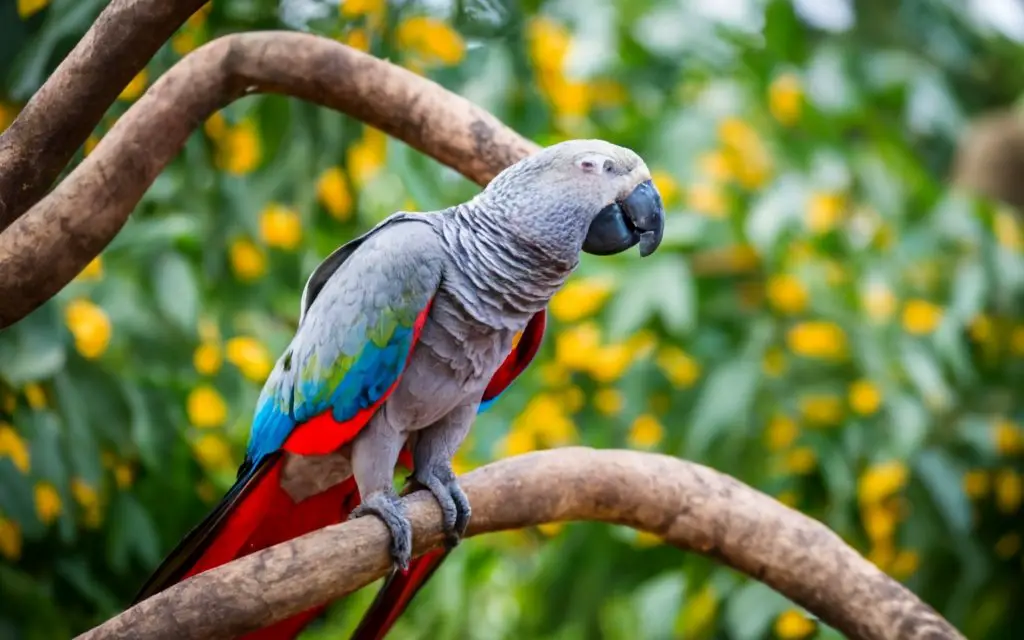
Natural habitat and behavior of African grey parrots
African grey parrots are native to the rainforests of West and Central Africa. They thrive in dense, humid forests with a mix of trees and rivers.
In the wild, they are highly intelligent and social birds, often found in pairs or small flocks.
They are known for their complex repertoire of vocalizations, mimicry skills, and ability to communicate through body language. African grey parrots are also highly curious and have a strong need for mental stimulation and social interaction.
They exhibit playful behaviors and are capable of problem-solving.
However, it’s important to note that their natural habitat is being threatened by deforestation, leading to a decline in their population.
Communication methods of African grey parrots
African grey parrots communicate through vocalizations, mimicry and imitation abilities, as well as body language and visual cues.
Vocalizations of African grey parrots
African grey parrots are known for their extensive vocal repertoire. They use various types of calls and vocalizations to communicate.
These include contact calls, alarm calls, and even learned vocalizations like words and phrases.
African grey parrots can mimic human speech and other sounds, making them excellent imitators. Their vocalizations serve as a way to communicate with others and express their needs and emotions.
Overall, African grey parrot vocalizations are diverse and fascinating to observe.
Mimicry and imitation abilities of African grey parrots
African grey parrots are known for their incredible mimicry and imitation abilities. They have the unique talent of reproducing various sounds and even human speech with impressive accuracy.
These parrots can imitate a wide range of sounds, including alarms, phone rings, and even other bird species.
They can also mimic human voices, accents, and even the intonations of speech. Their ability to imitate is attributed to their exceptional vocal learning capabilities and their complex cognitive abilities.
Body language and visual cues used by African grey parrots
African grey parrots use body language and visual cues to communicate their emotions and intentions. Some common signals include:
- Feather fluffing: Puffed-up feathers indicate contentment or relaxation.
- Head bobbing: A rhythmic movement may indicate excitement or curiosity.
- Wing positioning: Spreading their wings can express dominance or aggression.
- Eye pinning: Dilated pupils can convey fear, excitement, or arousal.
- Tail movements: Fanning or flicking their tail feathers may signify agitation or annoyance.
These gestures, along with vocalizations, help African grey parrots express themselves and interact with their environment and human companions. It’s important to observe and understand their body language to better communicate and respond to their needs.
Vocalizations of African grey parrots
African grey parrots have a wide range of vocalizations to communicate with each other and their human companions.
From mimicry to complex sounds, their vocal repertoire is fascinating and diverse.
Types of calls and vocalizations used by African grey parrots
African grey parrots use a variety of calls and vocalizations to communicate. These include:
- Contact calls: Used to maintain contact with their flock or human caretakers.
- Alarm calls: Signal potential threats and danger in their surroundings.
- Vocalizations for bonding: Used during social interactions to strengthen bonds with other parrots or humans.
- Vocal mimicry: African grey parrots are known for their ability to imitate human speech and other sounds in their environment.
These vocalizations serve different purposes and help African grey parrots express their needs, emotions, and social interactions effectively.
Meaning and interpretation of different vocalizations
African grey parrots use different vocalizations to convey meaning. For example, squawking loudly can indicate danger or distress.
Whistling and chirping may be a sign of contentment or happiness.
Different pitches and rhythms of their calls can also express excitement, curiosity, or even aggression. It’s important to pay attention to the context and accompanying body language to accurately interpret their vocalizations and understand what they are trying to communicate.
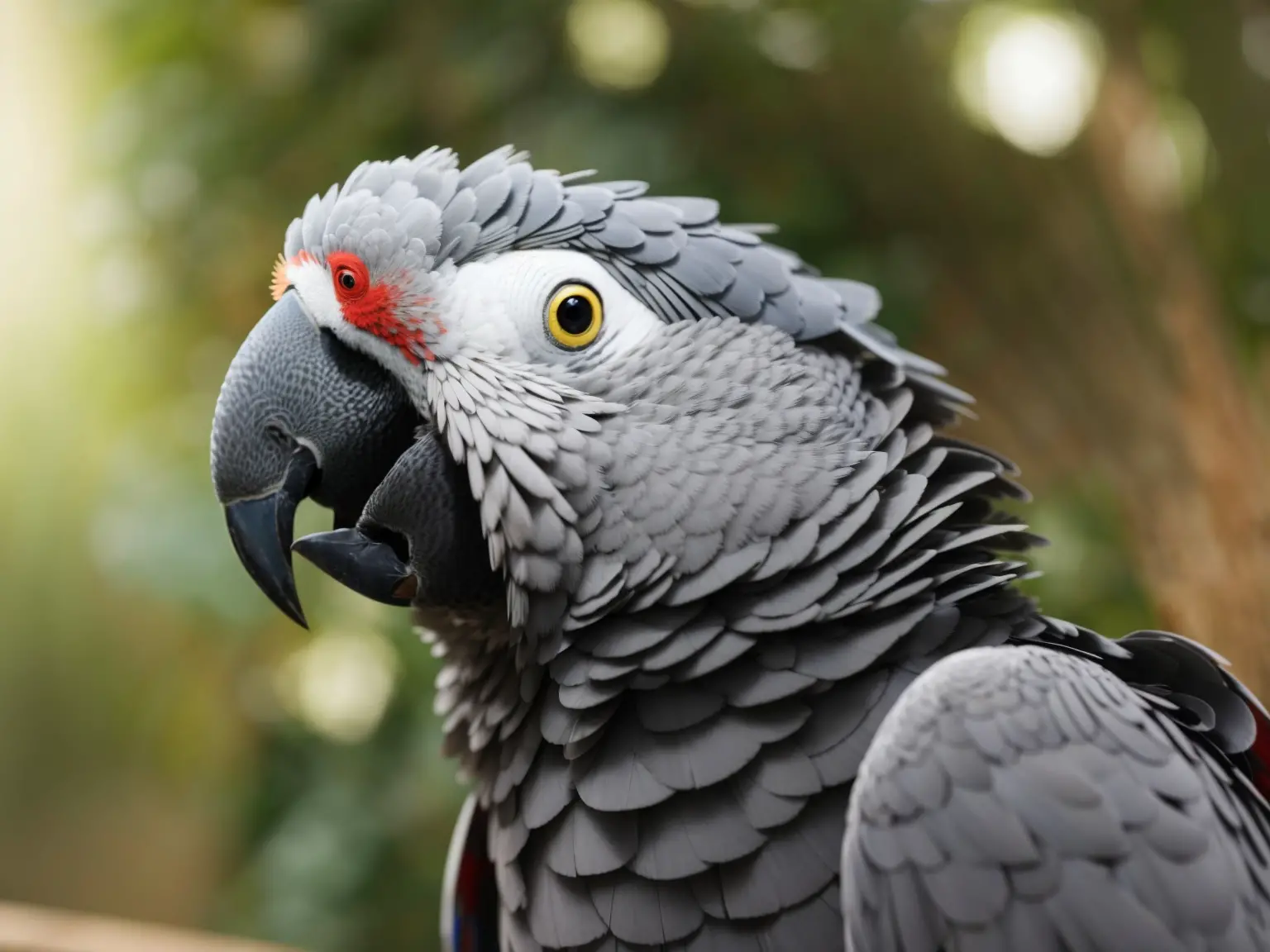
Examples and demonstrations of African grey parrot vocalizations
African grey parrots are renowned for their exceptional vocal abilities. They have the ability to mimic various sounds and voices, including human speech, animal noises, and even musical tunes.
Some examples of vocalizations that African grey parrots can produce include:
- Human speech: They can imitate and mimic human words and phrases, often with astonishing accuracy.
- Environmental sounds: They can recreate sounds from their surroundings such as doorbells, telephone ringtones, or even the sound of running water.
- Animal calls: African grey parrots can mimic the calls of other birds or animals, such as the chirping of a sparrow or the howl of a dog.
- Musical melodies: They can reproduce tunes and melodies, and some African grey parrots have even been known to sing complete songs.
These examples highlight the incredible vocal range and imitation abilities of African grey parrots, making them fascinating and entertaining companions.
Mimicry and imitation abilities of African grey parrots
African grey parrots are renowned for their remarkable abilities in mimicry and imitation.
They can mimic various sounds, voices, and even human speech.
Why African grey parrots are known for their mimicry skills
African grey parrots are known for their mimicry skills because they have an advanced vocal learning ability.
They can imitate a wide range of sounds, including human speech, other animal calls, and environmental noises.
This mimicry is a result of both their natural vocalization abilities and their ability to learn and mimic sounds they hear in their environment.
African grey parrots are highly intelligent birds that can mimic with exceptional accuracy and can even mimic different voices and accents.
Examples of what African grey parrots can mimic
African grey parrots have incredible mimicry abilities and can imitate a wide range of sounds and voices.
They can mimic human speech, animal noises, sounds from their environment, and even musical tunes.
Some African grey parrots have been known to mimic sounds like a ringing telephone, a barking dog, or a crying baby.
They can also imitate the voices of their owners, accurately replicating their tone and inflection.
It’s truly fascinating to witness the mimicry skills of these intelligent birds!
Factors influencing the mimicry abilities of African grey parrots
The mimicry abilities of African grey parrots are influenced by a variety of factors, including genetics, socialization, and exposure to different sounds and vocalizations.
These parrots have a natural inclination towards mimicry, but early exposure and social interactions play a crucial role in developing and refining their skills.
Additionally, individual personality traits and the amount of stimulation and enrichment in their environment can also impact their mimicry abilities.

Body language and visual cues used by African grey parrots
African grey parrots use body language and visual cues to communicate their feelings and intentions.
Common body language signals of African grey parrots
African grey parrots use various body language signals to communicate. Some common signals include fluffing up their feathers, which indicates relaxation and contentment.
They may also lower their head and spread their wings slightly, signaling playfulness or an invitation to interact.
Another signal is leaning forward with erect feathers, which can indicate curiosity or attentiveness. Additionally, African grey parrots may raise their crest to show excitement or raise one foot, which can be a sign of intimidation or aggression.
Paying attention to these cues can help you understand your parrot’s emotions and needs.
How African grey parrots use their eyes and feathers to communicate
African grey parrots use their eyes and feathers to communicate in various ways.
Through eye contact, they can express their emotions, intentions, and establish trust.
Their feathers play a role in displaying dominance, submission, and arousal.
They may fluff up their feathers to appear larger or sleek them down when trying to appear non-threatening.
These visual cues are essential for understanding their social dynamics and interactions.

Non-verbal communication during breeding and courtship
During breeding and courtship, African grey parrots use a variety of non-verbal communication cues. They may fluff their feathers, spread their wings, bob their heads, or engage in playful behavior.
Males may also present food to the female as a courtship gesture.
These behaviors help establish and reinforce pair bonds between mates.
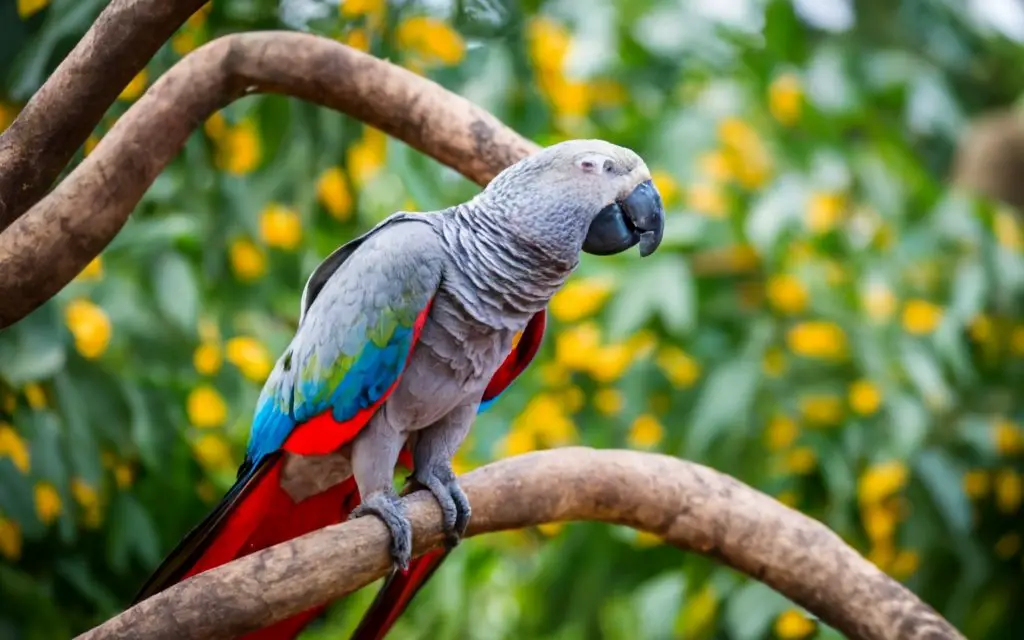
Interacting and communicating with African grey parrots
You can interact and communicate with African grey parrots by building trust and bonding with them, using training techniques, and understanding their communication cues.
Building trust and bonding with an African grey parrot
Building trust and bonding with an African grey parrot is essential for a strong and healthy relationship. Spend quality time together, be patient, and show consistency in your interactions.
Use positive reinforcement techniques and reward good behavior.
Respect their personal space and allow them to feel secure in their environment. Building trust takes time, so be persistent and understanding.
Training techniques for teaching African grey parrots to communicate
To teach African grey parrots to communicate, consistency is key. Start by establishing a daily routine and using positive reinforcement techniques such as treats and praise.
Use repetition and patience when introducing words or phrases, gradually increasing the difficulty.
Incorporate interactive toys and games to stimulate their cognitive abilities. Maintain a calm and relaxed environment to help them feel comfortable and encourage their vocalizations.
How to interpret and respond to the communication cues of African grey parrots
To interpret and respond to the communication cues of African grey parrots, observe their body language, vocalizations, and interactions with you.
Pay attention to their stance, feather position, eye contact, and tail movements.
Listen for their different vocalizations and learn their meanings.
Respond with appropriate actions, such as providing food, attention, or comfort, based on their cues.
Establishing trust and bonding with them is key to better understanding their communication signals.
Frequently Asked Questions
How long do African grey parrots live?
African grey parrots can live for a long time, with an average lifespan of 40 to 60 years.
However, some African grey parrots have been known to live well into their 80s! Taking proper care of their diet, environment, and overall health can help ensure they live a long and happy life.
Can African grey parrots understand human language?
African grey parrots have the remarkable ability to understand and even mimic human language.
They can associate words with their meanings and use them in context.
While they may not comprehend language the same way humans do, they can certainly grasp its basic concepts and communicate effectively with their human companions.
How can I teach my African grey parrot to talk?
To teach your African grey parrot to talk, you can follow these steps:
- Create a conducive environment: Provide a quiet and comfortable space for your parrot to learn and practice. Eliminate distractions and background noise.
- Use repetition and consistency: Consistently repeat words or phrases you want your parrot to learn. Say them clearly and in a positive tone. Repeat them daily during short training sessions.
- Provide positive reinforcement: Reward your parrot with treats, praise, or attention whenever they make an effort to mimic or repeat words. Positive reinforcement encourages them to continue learning.
- Be patient and persistent: Teaching a parrot to talk takes time and patience. Some parrots may pick up words quickly, while others may take longer. Stay consistent and persistent in your training efforts.
- Socialize and interact: Regular interaction and socialization with your parrot will help them develop their communication skills. Engage in conversations and daily interactions to encourage their vocal abilities.
Do African grey parrots communicate with other bird species?
Yes, African grey parrots are capable of communicating with other bird species. They use various vocalizations, body language, and visual cues to interact and communicate with birds from their own species as well as different species.
This allows them to establish social connections, share information, and engage in cooperative behaviors with other birds.
Can African grey parrots communicate through gestures?
Yes, African grey parrots can communicate through gestures.
They use their body language to convey various messages and intentions.
For example, they may raise their feathers when excited or display a submissive posture to show deference.
These gestures are an important part of their communication repertoire.
Final Verdict
African grey parrots are highly intelligent and social creatures known for their exceptional communication abilities. Through their vocalizations, mimicry skills, body language, and visual cues, they are able to convey a wide range of messages and interact with their environment.
Building trust, training, and understanding their communication cues are crucial for effective interaction with these fascinating birds.
With their long lifespan and unique capabilities, African grey parrots can truly enrich our lives as companions. So, whether you own one or plan to, taking the time to understand and engage with their communication is essential for a fulfilling and rewarding relationship.

